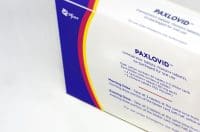Virtually all healthcare-associated UTIs are caused by instrumentation of the urinary tract, and 12% to 16% of adult hospital inpatients will have an indwelling urinary catheter at some time during their hospitalization. For each day of indwelling urinary catheter use, a patient’s risk of a catheter-associated urinary tract infection (CAUTI) increases 3% to 7%.
Complications associated with CAUTI lead to patient discomfort, prolonged hospital stays, and increased cost and mortality. Each year, more than 13,000 deaths are associated with UTIs.
Click here to learn how to track these events to help develop plans and protocols to prevent them.


















1 Comment.
I worked in a large catholic non-profit hospital. When a urinary catheter was inserted we were required to have 2 nurses present.
But my question is: we were also told that second person inflates toe balloon so that a non-clean hand would never touch the catheter. Nurses would slide their dirty left hand on to the catheter and inflate balloon with right hand. Is it possible that short time of contaminated left hand touching the catheter could increase risk of UTI?? I am a University nursing instructor now and I see no literature on this aspect.